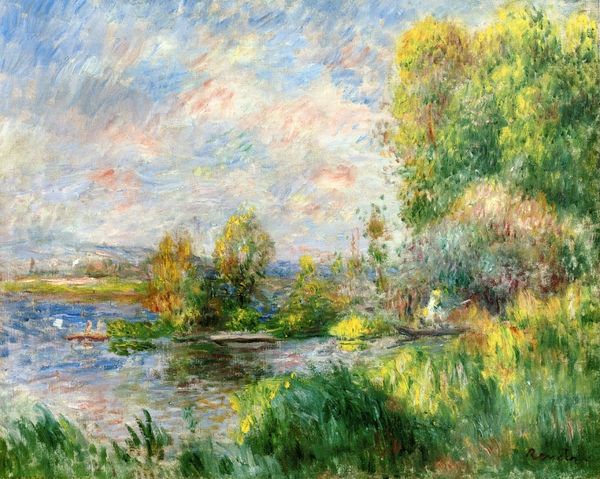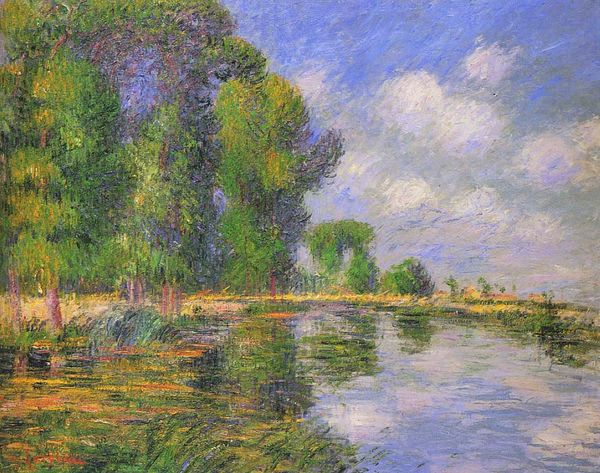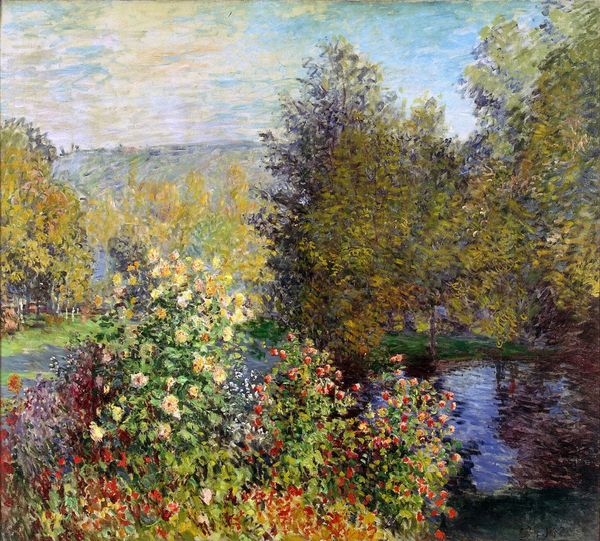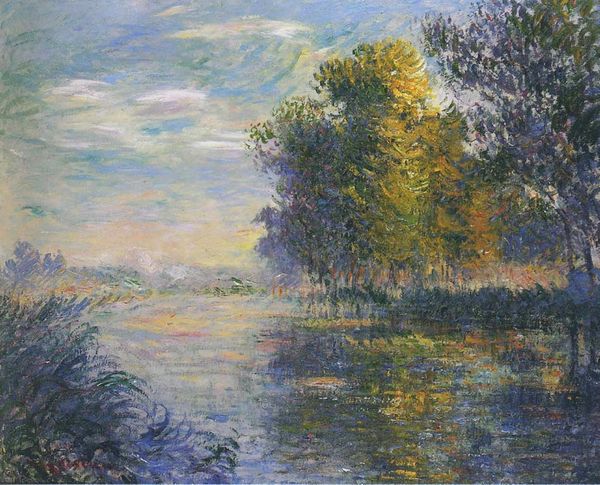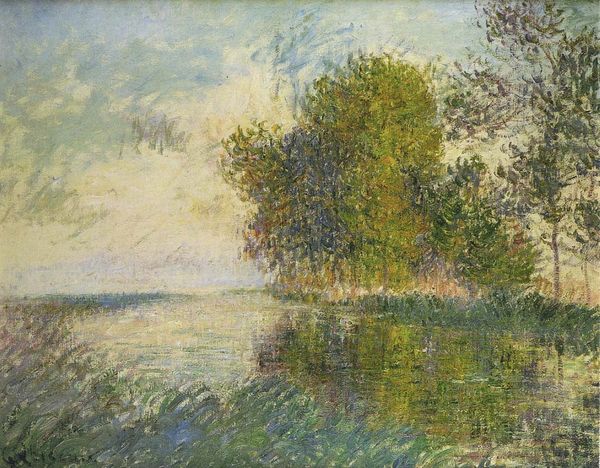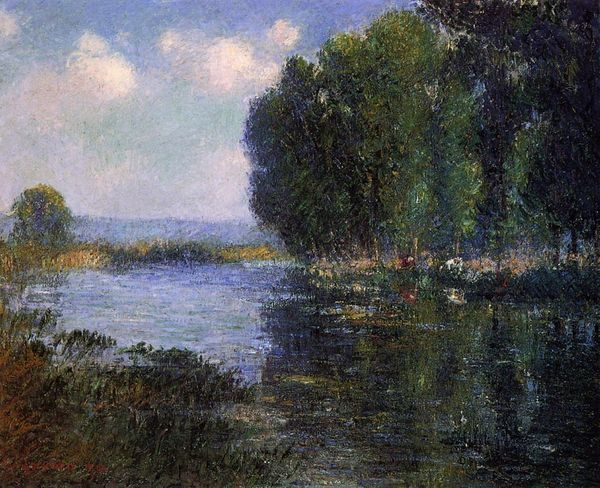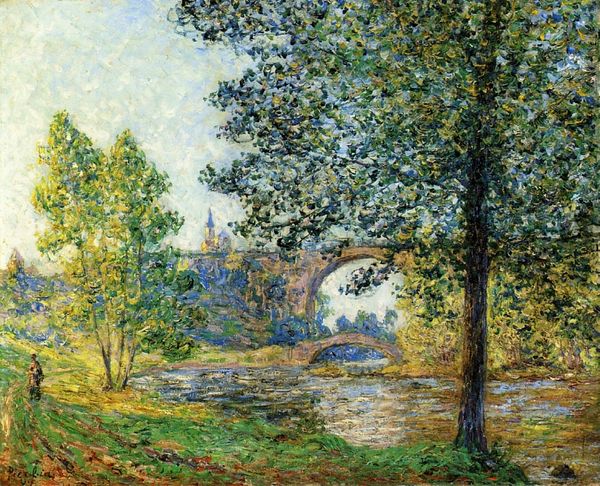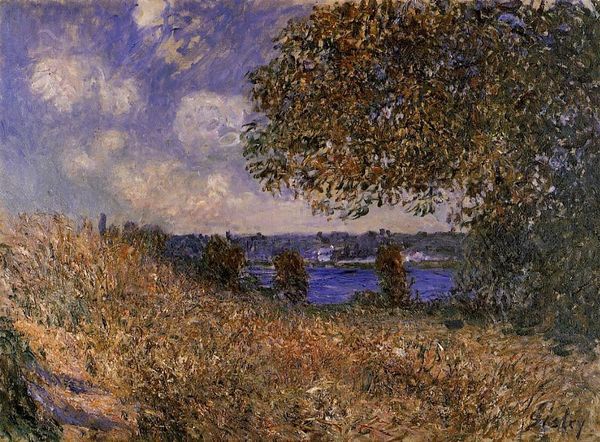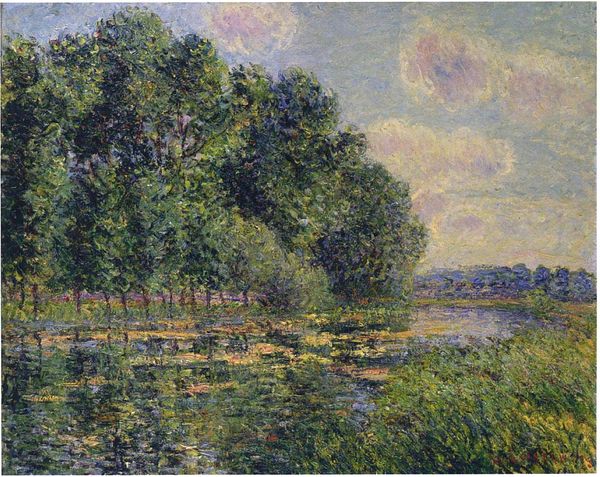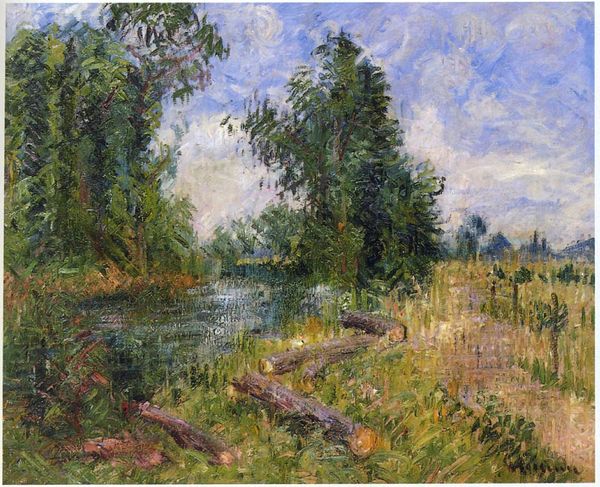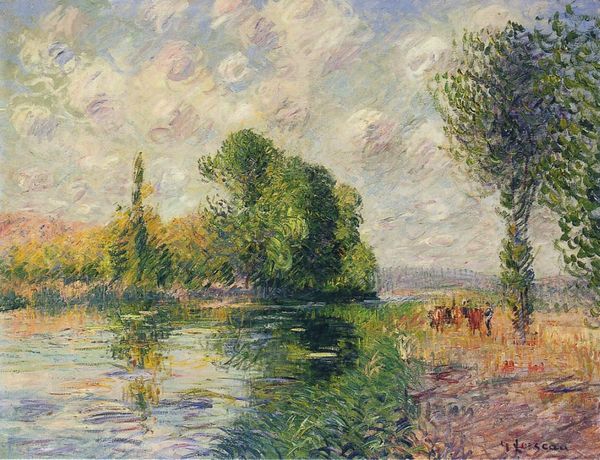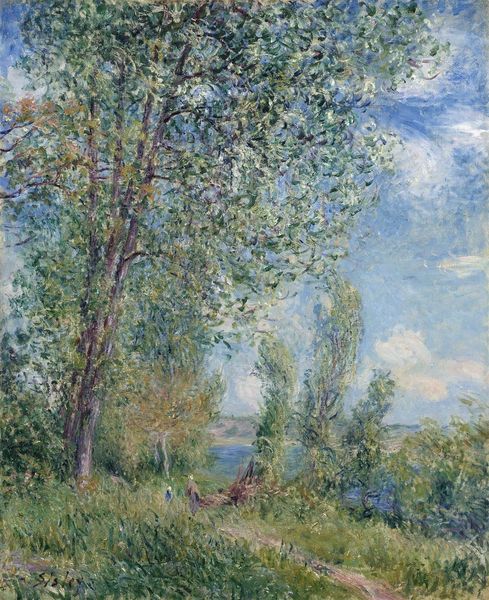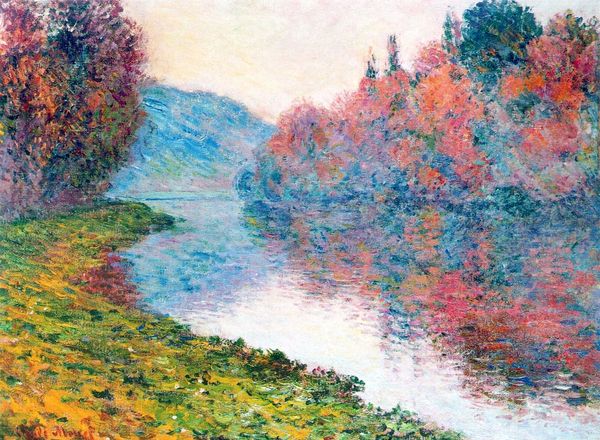
painting, plein-air, oil-paint
#
painting
#
impressionism
#
plein-air
#
oil-paint
#
landscape
#
impressionist landscape
#
figuration
Copyright: Public domain
Curator: Painted en plein air by Pierre-Auguste Renoir in 1881, this oil-on-canvas work is entitled "Chestnut Tree Blooming." Editor: My immediate response is of a shimmering, almost ethereal scene. The blurring of forms gives it this dreamy quality. Curator: Absolutely, Renoir was at the height of his Impressionist technique here. We see this exploration into the experience of painting and the work that has been done in direct engagement with what he sees outside, rather than a reliance on academic painting or indoor workshops. The way he handled oil-paint at this stage in his career displays a unique vision when examining this natural subject. The loose brushstrokes and focus on light create a sense of immediacy. Editor: I wonder what Renoir was trying to communicate through this rendering of landscape? He often focused on bourgeois leisure. How might the subject here, of people interacting with nature, speak to issues of class and the accessibility of leisure in late 19th-century France? The act of witnessing these people among such lavish foliage could communicate the values of class and labor at the time. Curator: It’s intriguing to think about Renoir grappling with those social issues through his art. Looking closely, the materiality speaks volumes. Note the layers of brushstrokes, and the visible weave of the canvas peeking through. These show that Renoir’s approach isn't about illusionism; rather, he's using color and texture to capture the sensory experience of being there. Editor: His approach to figuration, though, has certainly had an enduring effect. You still see these values portrayed today across mainstream entertainment—romanticizing idealized standards of living. It begs the question—whose landscape is really being presented here? And for whom? Curator: These types of production considerations definitely add an enriching layer. By paying close attention to the materiality, to the hand of the artist and to the broader social landscape, we can learn to interrogate its impact. Editor: It shows how Impressionism and plein-air techniques allowed new means to communicate themes such as the intersection of labor, gender, and identity—to both challenge and also reproduce its ongoing portrayal.
Comments
No comments
Be the first to comment and join the conversation on the ultimate creative platform.
